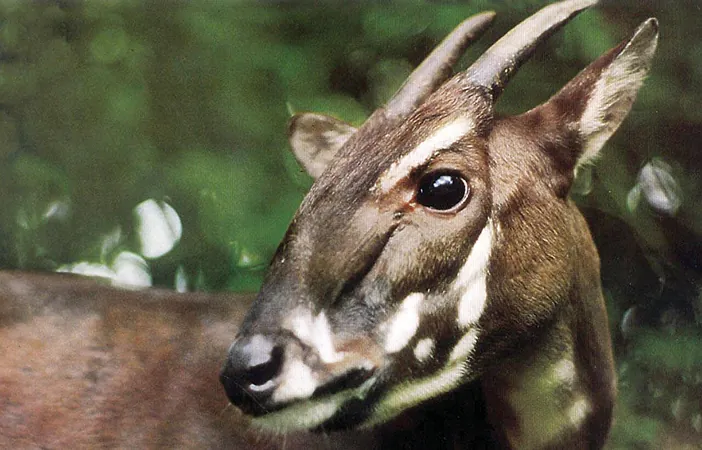
The Quest to Save the Asian Unicorn: Saola Genome Mapped for the First Time
2025-05-05
Author: Jacques
Is the Saola Still Among Us?
Is the legendary saola extinct, or does it still wander the misty highlands of Vietnam and Laos? Known as the Asian unicorn for its extreme rarity, this elusive creature was only discovered by scientists in 1992 and was already endangered by then.
A Critical Situation for the Saola
Today, estimates suggest there are fewer than 100 saolas (Pseudoryx nghetinhensis) left, with the last confirmed sighting occurring in 2013. Researchers have tirelessly searched for any sign of life, yet the saola's habitat in the remote Annamite Mountains complicates efforts.
"Currently, we cannot confirm whether live saolas exist or not. The last evidence, captured in 2013, came from a camera trap, but the forest's remoteness adds to the uncertainty," explains Nguyen Quoc Dung, a researcher involved in an international study mapping the saola genome.
Groundbreaking Genetic Discoveries
A recent international study led by researchers from Denmark and Vietnam has succeeded in mapping the saola's genome for the very first time. This groundbreaking research, published in the journal Cell, analyzed genetic fragments obtained from remains collected from hunters.
The team managed to compile entire genomes from 26 saolas, unveiling shocking insights into the species' history and future.
The Two Populations of Saola
"Surprisingly, we found that saolas are divided into two genetically distinct populations, split between 5,000 and 20,000 years ago. This crucial discovery was made possible by the genetic data we gathered," says lead author Genís Garcia Erill.
Both populations have been on a downward trajectory since the last Ice Age, never exceeding 5,000 individuals over the past 10,000 years, resulting in significant genetic diversity loss.
A Glimmer of Hope for Survival
However, the loss is not identical, meaning that mixing the populations could potentially restore genetic diversity. Researchers propose that a successful captive breeding program involving individuals from both groups could lead to a sustainable saola population.
"If we can gather at least a dozen saolas, especially mixing both populations, our models indicate a strong chance for long-term survival. But first, we need to find them," states co-author Rasmus Heller.
The Search for the Elusive Saola
Finding these elusive creatures is no easy feat. Yet, this genetic mapping may offer new strategies to locate the remaining saolas. While past efforts to detect saola traces through environmental DNA and other methods have been unsuccessful, the complete saola genome gives researchers a better toolset for their searches.
"Many have tried, but now with the complete genome, we hope to enhance detection methods effectively," says Minh Duc Le, another co-author.
A Last Resort: Genetic De-extinction?
Even if the saola turns out to be extinct, these findings could pave new paths in the realm of genetic de-extinction technologies, which are gaining momentum. "Our insights could significantly inform efforts aimed at reviving the saola population," Heller adds.
A Cautious Optimism
Despite the glimmer of hope, Heller remains realistic. "Scientists have searched for saolas since the 1990s, and as time goes on, the chances decrease. While I’m not overly optimistic, I sincerely hope the saola still survives somewhere out there."









 Brasil (PT)
Brasil (PT)
 Canada (EN)
Canada (EN)
 Chile (ES)
Chile (ES)
 Česko (CS)
Česko (CS)
 대한민국 (KO)
대한민국 (KO)
 España (ES)
España (ES)
 France (FR)
France (FR)
 Hong Kong (EN)
Hong Kong (EN)
 Italia (IT)
Italia (IT)
 日本 (JA)
日本 (JA)
 Magyarország (HU)
Magyarország (HU)
 Norge (NO)
Norge (NO)
 Polska (PL)
Polska (PL)
 Schweiz (DE)
Schweiz (DE)
 Singapore (EN)
Singapore (EN)
 Sverige (SV)
Sverige (SV)
 Suomi (FI)
Suomi (FI)
 Türkiye (TR)
Türkiye (TR)
 الإمارات العربية المتحدة (AR)
الإمارات العربية المتحدة (AR)